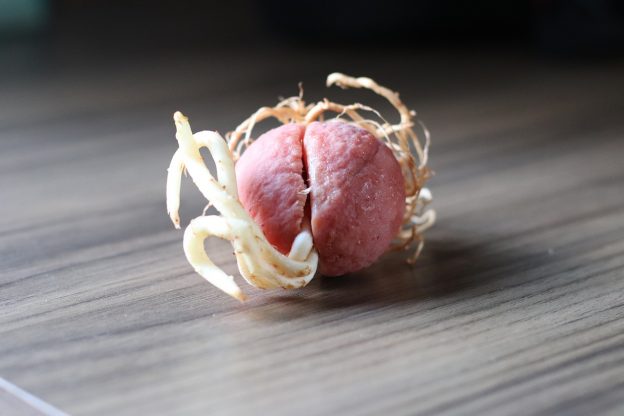Tiny houses: Illustration AI generated by GrumpyBeere from Pixabay
7x new studies on tiny and shared housing, climate-induced stock volatility, sustainability-led bonds, ESG-ETF divestment effects, hedge fund corporate governance effects, SFDR analysis, female SDG fintech power (# shows SSRN full paper downloads as of July 11th, 2024)
Social and ecological research (Tiny houses and more)
Tiny houses and & shared living: Living smaller: acceptance, effects and structural factors in the EU by Matthias Lehner, Jessika Luth Richter, Halliki Kreinin, Pia Mamut, Edina Vadovics, Josefine Henman, Oksana Mont, Doris Fuchs as of June 27th, 2024: “This article … studies the acceptance, motivation and side-effects of voluntarily reducing living space in five European Union countries: Germany, Hungary, Latvia, Spain and Sweden. … Overall, the data reveal an initial reluctance among citizens to reduce living space voluntarily. They also point to some major structural barriers: the housing market and its regulatory framework, social inequality, or dominant societal norms regarding ‘the ideal home’. Enhanced community amenities can compensate for reduced private living space, though contingent upon a clear allocation of rights and responsibilities. Participants also reported positive effects to living smaller, including increased time for leisure activities and proximity to services. This was often coupled with urbanization, which may also be part of living smaller in the future” (Abstract). My comment: See Wohnteilen: Viel Wohnraum-Impact mit wenig Aufwand
Responsible investment research
Climate vola: Do Climate Risks Increase Stock Volatility? By Mengjie Shi from the Deutsche Bundesbank Research Center as of July 1st, 2024 (#23): “This paper finds that stocks in firms with high climate risk exposure tend to exhibit increased volatility, a trend that has intensified in recent years, especially following the signing of the Paris Agreement in 2015. … Institutional investors and climate policies help counterbalance the impact of climate risks on stock stability, whereas public concerns amplify it. My baseline findings are robust across alternative climate risk and stock volatility measures, as well as diverse country samples. Subsample analysis reveals that these effects are more pronounced in firms with carbon reduction targets, those in carbon-intensive industries, and those with reported emissions” (p. 23).
Bondwashing? Picking out “ESG-debt Lemons”: Institutional Investors and the Pricing of Sustainability-linked Bonds by Aleksander A. Aleszczyk and Maria Loumioti as of July 2nd, 2024 (#20): “… classifying SLBs into impact-oriented (i.e., ESG performance-enhancement and transition bonds) and values-oriented (i.e., bonds not written on ambitious and material sustainability outcomes or those issued by firms with less significant sustainability footprint). We find that investors equally price various degrees of sustainability impact in SLBs and likely pay too much for buying an ESG-label attached to SLBs that are unlikely to yield strong sustainability impact. We show that demand for sustainability impact is positively influenced by investors’ ESG commitment and strategy implementation and SLB investment preferences. Heavyweight ESG-active asset managers are more likely to purchase values-aligned SLBs. Focusing on investor pricing decisions, we find that new entrants and investors likely to benefit from adding impact-oriented SLBs to their portfolios are more willing to pay for impact. In contrast, investors with a preference for values-oriented SLBs are less willing to pay a sustainability impact premium“ (p. 31/32). My comment: I focus on bond-ETFs with already good ESG-ratings for my ETF-portfolios not on (“sustainable”) bond labels
Divestments work: The effects of Divestment from ESG Exchange Traded Funds by Sebastian A. Gehricke, Pakorn Aschakulporn, Tahir Suleman, and Ben Wilkinson as of June 25th, 2024 (#5): “We find that divestment by predominantly passive ESG ETFs has a significant negative effect on the stock returns of firms, especially when a higher number of ESG ETFs divest in a firm in the same quarter …. Such coordinated divestment results in initial negative effects on stock returns, increases in the firms’ equity and debt cost of capital and a delayed decrease in carbon emission intensities. There also seems to be a positive effect on ESG ratings, but only after 8 quarters” (p. 16/17). My comment: my experience with divestments is positive, see Divestments: 49 bei 30 Aktien meines Artikel 9 Fonds. Since then, I reinvested in a few stocks which improved their ESG-ratings.
Good hedge funds: Corporate Governance and Hedge Fund Activism by Shane Goodwin as of Feb. 12th, 2024 (#159): “My novel approach to inside ownership and short-interest positions as instrumented variables that predict a Target Firm’s vulnerability to hedge fund activism contributes to the literature on the determinants of shareholder activism. … My findings suggest that Hedge Fund Activists generate substantial long-term value for Target Firms and their long-term shareholders when those hedge funds function as a shareholder advocate to monitor management through active board engagement“ (p. 155/156).
SFDR clarity? Sustainability-related materiality in the SFDR by Nathan de Arriba-Sellier and Arnaud Van Caenegem as of July 1st, 2024 (#19): “… we should think about the SFDR as a layered system of sustainability-related disclosures, which combine the concepts of “single-materiality” and the “double-materiality”. … it is not the definition of “sustainable investment” which is relevant, but the additional disclosure requirements that apply as soon as a financial market participant deems its financial product to be in line with the definition. The SFDR encourages robust internal assessments over blind reliance on opaque ESG rating agencies and provides financial market participants with the freedom to justify what a contribution to an environmental or social objective means. This freedom sets it apart from a labeling mechanism with a clearly defined threshold of what a contribution should entail. The … proposed guidelines by ESMA for regulating the names of investment funds that involve sustainable investment … do not create a clear labelling regime” (abstract).
Other investment research (in: Tiny houses and more)
Female SDG power: Measuring Fintech’s Commitment to Sustainable Development Goals by Víctor Giménez García, Isabel Narbón-Perpiñá, Diego Prior Jiménez and Josep Rialp as of May 31st, 2024 (#8): “This study investigates the performance of Fintech companies in achieving Sustainable Development Goals (SDGs) … Our results show that female founders enhance Fintech sector’s alignment with the SDGs, specially in smaller companies, indicating that gender diversity in leadership promotes sustainable practices. Additionally, companies with more experienced founders and higher funding tend to prioritize growth and financial performance over sustainability” (abstract).
………………………………………………………………………………………………………………………………………..
Werbehinweis (in: Tiny houses and more)
Unterstützen Sie meinen Researchblog, indem Sie in meinen globalen Smallcap-Investmentfonds (SFDR Art. 9) investieren und/oder ihn empfehlen. Der Fonds konzentriert sich auf die Ziele für nachhaltige Entwicklung (SDG: Investment impact) und verwendet separate E-, S- und G-Best-in-Universe-Mindestratings sowie ein breites Aktionärsengagement (Investor impact) bei derzeit 29 von 30 Unternehmen: Vgl. My fund.
Zur jetzt wieder guten Performance siehe zum Beispiel Fonds-Portfolio: Mein Fonds | CAPinside









